From puzzled to positive: Putting your customers on a path to brand recognition
| July 27, 2020
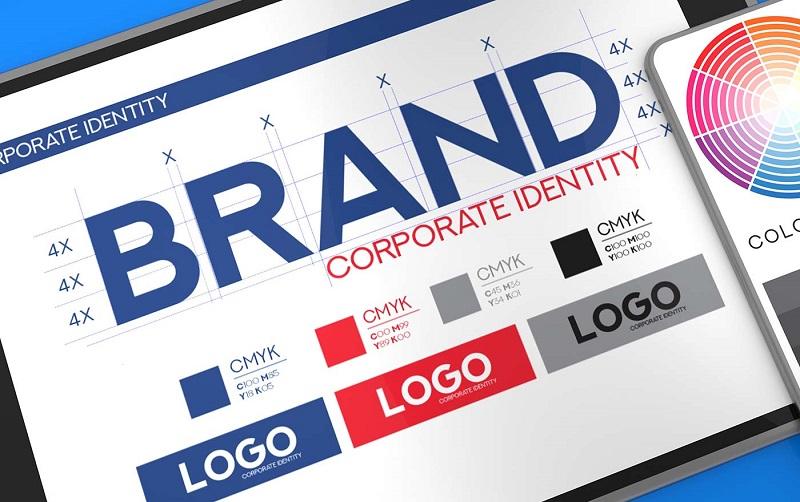
We’d all like to be the only brand within a particular market, but that’s just not the case. However, it is possible to make it seem that way to your audience.
So, how do we do that? The key is brand recognition.
Any time a potential customer is contemplating a purchase, they think of your brand. Whenever they need a service that fits their requirements, again, they think of you – that’s brand recognition.
Without an effective effort to build recognition, a competing brand might pop into their heads. Let’s make sure it’s the former, not the latter.
What is brand recognition?
Brand recognition is when someone distinguishes a specific brand through identifiers such as color schemes, jingles, packaging or logos. The common denominator for brand recognition is a brand must be recognized before its name is directly given in any way.
Another way to help understand brand recognition is by thinking of it like this: if someone asks if you’ve ever heard of Apple, for example, and you have heard of them, this is not brand recognition.
However, if someone shows you the Apple logo and asks what brand that represents, and you know it’s Apple, that is brand recognition.
In this article, I’m going to explain ways that you can capture your target market so that they’ll recognize your brand when the time comes. The result will be greater success throughout each new campaign. Let’s get started.
Why should brands focus on building recognition?
Before breaking down some of the more important strategies about building recognition, it’s helpful to see all the reasons why it’s important laid out in front of us.
Increases their ability to charge more for products and/or services
“Pricing is actually pretty simple…Customers will not pay literally a penny more than the true value of the product.” – Ron Johnson
It seems strange, but good recognition does in fact allow brands to create larger profit margins on their products and services.
This is because recognition increases overall brand equity, which is the biggest reason why customers choose to spend more due to the brand behind the service.
Think of these two concepts, recognition and equity, as a convergence that amplifies the effects of both. When brand recognition is stronger, brand equity is stronger as a result, and vice-versa. The effect is compounding.
Because of this, the benefits of greater brand equity become benefits of brand recognition. Therefore, being able to charge more for products and services inflates as recognition increases.
Keeps your brand at the forefront of customers’ minds
It’s unlikely that your brand is the only one in a particular market. It’s also unlikely that you’re the only company, among your competitors, trying to boost brand recognition.
Strong recognition entices customers to think of your brand instead of a competing brand when they’re making a purchase.
That’s the power of brand recognition – it is a steady reminder that your brand has the service they want and need. Without it, a competing brand might pop into their heads.
There are other benefits of good brand recognition that are more abstract and less direct. As you continue to learn more about it, these will come into focus now and then.
Before I dig into some helpful strategies, I want to make sure you understand the difference between brand recognition and brand awareness.
A helpful breakdown of the difference between brand recognition and brand awareness
Though similar, there is a difference between recognition and awareness. Many people struggle to tell them apart, so I’ll break it down in a straightforward fashion. Once you understand it, building brand recognition becomes a lot easier.
As I pointed out earlier with my Apple example, recognition is the idea that people can identify a brand from different visual or audio indicators. Brand awareness is when a person knows that a brand exists.
You’ve probably seen components of brand recognition in action at some point of your life. For example, in some parts of the world, asking for a ‘Coke’ is the same as asking for a soda of any brand or flavor. Brand recognition allows a brand name to ingrain itself into common phrases and words.
Brand awareness is a much more nuanced part of branding. Customers who are brand aware have a greater understanding of your brand, further than simple recognition. They typically know that your brand products or services are the answer to their many needs and requirements.
Finally, brand awareness digs underneath the surface of a brand, showing its core values to its target market. This may make it seem more important than recognition, which is very surface-level, but they are simply different. One isn’t better than the other.
Despite their differences, the two concepts do build off each other, so keep that in mind as you learn how to better your recognition.
6 standout strategies to build brand recognition
I’ve come up with six approaches that are proven to create and maintain solid brand recognition. Embrace each method as a potential way to take your brand to new heights.
1. Start with brand consistency and keep it intact
It goes without saying that a brand is hard to recognize if it doesn’t adhere to some level of consistency. Changing a logo or name once might not be a big deal, but thirty times in a decade certainly would be.
Consistent brands on average have 30% higher revenue – which is reason alone to focus on it.
Consider a global restaurant brand. Certainly, if a customer walks into one of their restaurants, they expect the layout, color schemes and other identifiers to be consistent with ones from different locations.
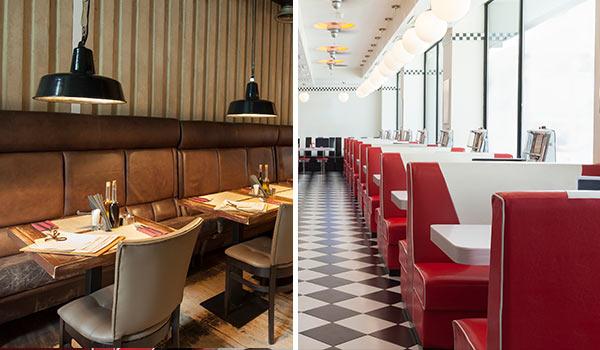
Brand consistency aims to uphold certain values of a brand at all times. Failing to do so creates a disconnect between brand and its perceived ideals. If brand consistency isn’t met, there will be less reason for a customer to commit a brand to his or her memory.
For example, if you read about an exciting new brand that plans on being a family-friendly company, then fails to live up to this identity, you won’t likely take the time to commit their logo or jingle to your memory.
Creating brand consistency takes a company-wide effort, but is definitely worth it. The end result will be a much higher likelihood of brand recognition from your target market. Here are a few ways to build consistency:
- Develop a meaningful message
- Create and maintain visuals that matter
- Use a consistent tone
Finally, remember that consistency is an ongoing, dynamic process that requires extensive research and self-analysis to sustain.
2. Compose brand visuals that are impossible to tune out
“Create your own visual style… let it be unique for yourself and yet identifiable for others.” – Orson Welles
Visuals are usually the biggest factor in brand recognition. From color schemes, logos, design structures and more, they provide an easy way for customers to quickly identify a brand.
Accordingly, you’ll want to create visual elements that encourage recognition. Furthermore, these visuals should be used correctly on different campaigns.
Let’s take a look at some examples to demonstrate the types of visual elements conducive to building recognition.
Logos
A strong logo aids in recognition, even if it doesn’t include the name of the brand. For this to be true of your logo, it has to be in-line with the main message your brand expresses to its target market.
Let’s take a look at the Nike logo for a moment.
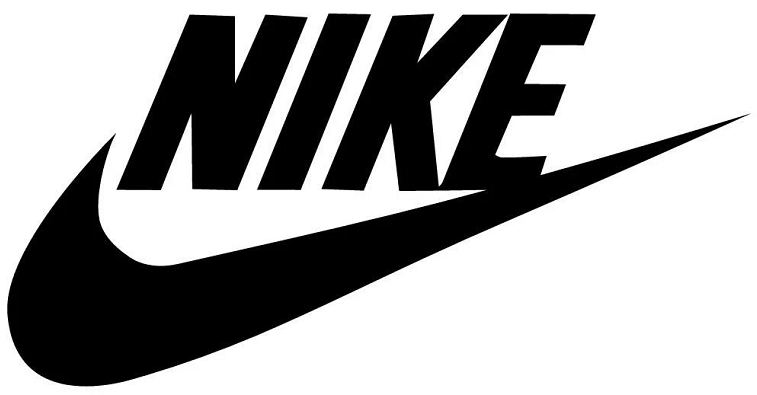
There are a couple things I want to point out here. The first is the swoosh underlining the text. Because Nike wants to be known as a brand for performance and athletics, the swoosh fits nicely. When people see the swoosh, they feel a sense of swift movement from the logo.
Next, consider the words themselves. First, consider the sharpness of the font. Each letter is crisp and bold. Imagine if the font was curvy and soft – the logo would be ineffective.
Also note the tension and movement in the text. The letters lean forward, as if preparing to bolt off the logo and run a mile.
When you combine all the unique individual factors that went into this logo, it’s a very strong visual element. Nike’s target market surely feels the logo relays the right message about the products Nike sells and what they represent.
Lastly, the above logo doesn’t really prove brand recognition, as the words are included. However, consider the following image:
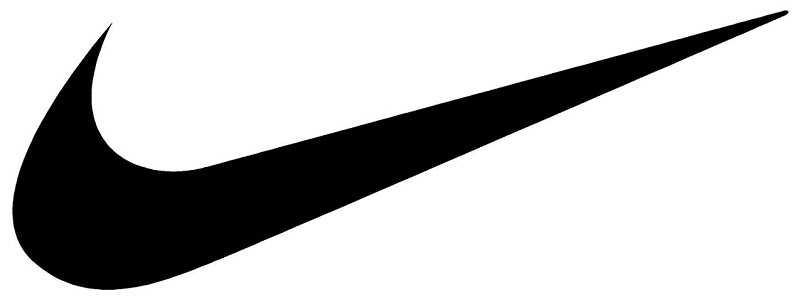
Because of the consistent visual schemes such as color and design, people recognize this as the Nike logo.
Ensure that your logo speaks to your target market the same way Nike’s does. Consider if customers would recognize it as yours, even if there are no words.
Color schemes
Did you know that repetition of specific colors on visual components increases brand recognition by close to 90%? It’s true. If ten people saw your visual elements without any color schemes, and three of them recognized your brand, that means nearly six would have recognized it had color schemes been present.

Colors are a powerful tool for brand recognition because they evoke emotions, which return upon seeing similar colors in the future.
Consider the British oil company bp’s color schemes.
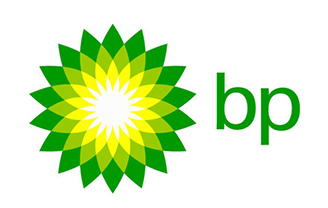
Clearly, they wanted to emphasize green, with a mostly-green logo and fully-green text.
Green typically brings up different feelings about nature (green trees, fields, grass, etc.) which is important for bp, considering their connection with the Earth and the fact they use its resources.
Whether bp is doing good for the environment or not isn’t the point – the point is that they’re using color schemes to propose that they are; or at the very least to suggest that they care.
If you’re not sure which colors would fit your brand, don’t worry. There are plenty of resources to guide you in the right direction, including this quiz that provides sophisticated answers about colors.
Visual consistency
Finally, the underlying principle that brings all these visual element concepts together is the idea that visible attributes must adhere to at least some level of consistency.
This entails using the same color schemes, fonts and logos throughout different campaigns, projects and advertisements.
There can be some differentiation, but it must be done within reason. If a nationwide brand has some of their store interiors painted completely white while others are green, it’s not going to breed recognition.
Consider the following Amazon logos:

They are completely different yet within reason. The usage of one or the other on different newsletters would be mostly unnoticeable and still boost recognition.
Compare that to the following:

Clearly this would be different to the point of detriment. Consistency should always be followed, at least to a reasonable extent.
3. Create loud audio without the high volume
Sounds, especially music, have a powerful influence over people’s emotions. So much so, in fact, that neglecting to use them when possible in your branding could result in missing out on numerous customer connections.

Does this mean you have to be a musical genius or hire a brilliant musician in order to create a comprehensive jingle? Of course not. There are plenty of brands who use a simple audio bit that captivates millions.
For example, consider the Intel jingle. The five-syllable tune has become iconic and is even available in sheet music on display at the Intel museum. Just seeing the Intel logo often elicits a memory of the jingle. See if you can hear it just by looking at the image below:
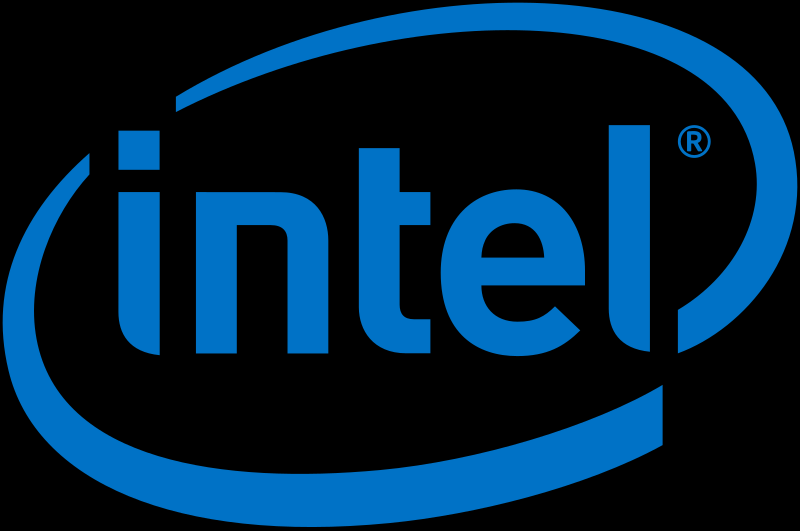
Visuals definitely still reign supreme when it comes to branding, but consider the evolution of sound, especially recently. People are now getting information from audio instead of text in a lot of their daily tasks.
For example, instead of logging onto a computer to research the weather, someone might now ask Siri (Google) or Alexa (Amazon) to tell them the weather.
It’s clear that audio is trending, so make sure the sounds you use are memorable in some way while adhering to brand values.
One way to do this is consider the tempo of a jingle or the strength of a sound. For example, if you are a yoga brand, a slow, soft peaceful jingle would be best. If you’re an athletic performance brand, a fast, powerful tune would work.
4. Concentrate on the people part of social media
Part of being seen is putting yourself out there. With all the different social media sites available today, it takes a more wide-scale effort to put your brand in the public eye consistently.

If nothing else, getting your visual elements onto different social media sites is a step toward brand recognition, though obviously this is only a small piece of the puzzle.
One of the most successful social media brands is GoPro, a brand that encourages users to post their stories online.
Connecting with users on many different platforms including Facebook, Instagram, Twitter and YouTube, GoPro makes it easy to see why their products are so unique.
Part of the reason they have so many followers is the diversity in their footage. GoPro creates stories from all different locations and events, from oceans to backyards.
So how can you go about using social media to increase your recognition? Start by following trends and utilizing sites that would be a good match for your specific image and values. Then, look for creative ways to build community involvement and make interactions open-ended.
5. Put public relations to use for your brand
Just like with the above concept of social media, PR is an essential way to get your brand in front of its target market, which boosts recognition potential.
PR campaigns are popular and effective because of how easy and economical they are. However, just because they’re straightforward doesn’t mean you have to restrict creativity to enhance your campaign.
Consider how you can attract positive focus onto your brands unique traits, values and characteristics. This often leads to publicizing lighthearted articles about memorable brand moments throughout history.
Don’t be afraid to share exciting developments about your brand! Chances are, customers want to hear about it and would appreciate the information showing up in their go-to sources.
Lastly, remember that the effort of spreading the good news about your brand doesn’t have to be yours alone. There are agencies dedicated to establishing and perpetuating PR that is sure to keep you in the spotlight.
6. Command customer focus using email newsletters and blog posts
If you haven’t noticed by now, a common theme among these strategies is to put our brand in front of target markets as much as possible in a meaningful way.
Here are a couple ways to accomplish this. First, entertain the idea of implementing a periodic email newsletter. Next, build a blog to give your audience a way to connect further with your brand.
Crafting email newsletters
By 2024, it’s estimated that about 5 billion users will have an email account. We won’t be targeting all 5 billion (hopefully), but it helps to gauge the importance and growth of the digital tool.
Let’s start by getting an effective email newsletter set up. In order for this to be successful, the content will have to be inviting. So where should we place the most of our focus? Though it’s a little surprising, the headline is more important than anything else, so let’s start there.
In order to create a strong email newsletter, the headline has to be perfect: intriguing, relevant, genuine, actionable, etc. Gone are the days when this type of headline ‘worked’: “(no subject)”.
There are plenty of good resources for building a powerful headline. Here are a few tips that I’ve found to be effective:
- You’re not talking to a friend or relative, but a headline can still be personalized
- Be effective without being lengthy
- Avoid spammy/salesy language
- Don’t cheapen the message with slimy tactics (all caps, weird symbols, exaggerated tones, etc.)
Next up is the content of the emails. First things first: offering a sale of some sort is okay, but only if done in moderation.
For example, let’s say you send one email newsletter per month. It would be reasonable to only include some type of offer or suggestion for a purchase two times per year. This prevents our newsletters from turning customers off.
As far as the structure is concerned, it will be in your best interest to use some type of template software, since it’s likely you’ll have to send out a lot of professional newsletters. BeeFree has some unique designs you might wanna check out.
Finally, we need to create content that keeps our brand on the customers minds and ensures they won’t click ‘delete’ on our next newsletter. Here are the most important details to consider including when building your emails:
Structure and readability. An email is no different from a webpage design. If it’s annoying, unsightly or distracting, users will click off of it.
Practicality. Think about what the readers might get out of the newsletter. If they won’t learn anything helpful, add more content.
Personalization. Even if only slightly, most readers prefer a newsletter to have some form of personalized content that is exclusive to them.
Last of all, ensure each newsletter has consistent branding, with possibly a logo in every message, so long as it’s not intrusive to the content.
Build a blog
A blog is a chance to boost authority and provide content to your target market. Like a newsletter, it provides updates of ongoing developments while keeping a brand in view for customers.
Use blog posts as a chance to answer questions your target market may have and show yourself to be a reliable source of information in a certain industry or on particular topics.
These are some ways to make sure your blog connects with customers:
Keep a semi-strict publishing schedule. The readers will expect some type of adherence to a publishing schedule, though this can be somewhat flexible. The only time where it needs to be completely strict is if you promise certain publication dates.
Cater content to your specific audience. Sure, it’s great to pick up new readers from time-to-time, but our blog should mostly be relevant to our target audience.
Value quality over quantity. It doesn’t do much good to pump out a bunch of articles if they don’t really address the topic with any substance. Even if it means creating less content, make sure it’s of the highest quality possible.
Follow your brand style guide. This is especially important for building recognition. If the blog content differs from other areas of your website, it’s going to create a disconnect between your brand and customers. Make sure you stick to the brand style guide.
Research each article in-depth. Doing some serious research into each article and the keywords involved is crucial for a blog. Otherwise, you’ll end up creating a piece that doesn’t have any purpose existing. Tools like ahrefs are great for digging into keyword analysis.
Now that you have some clear strategies to boost your brand recognition, we’ll examine some examples of brands who create amazing recognition in unique ways.
Examples of brands who did it well
The following brands all command exceptional recognition due to a lot of unique factors that are definitely worth exploring further.
Disney
Disney has used powerful marketing strategies throughout the years to create a brand recognizable by just about everyone.

The experiences, consistency, visuals and audio indications all feed into the end result, which is the fact that most people can pick out Mickey Mouse’s ears from a drawing, or his voice from an audio clip.
More recently, they’ve used this to expand into different markets, creating products and offering services that tackle things Disney never used to be involved with.
Just like with Nike, Google uses its name as text within its flagship logo. For this reason, it’s fair to say that recognition doesn’t apply. However, consider the following subsidiary logos and symbols:

Would you be able to recognize these as Google? I believe you, and most everyone, would be able to.
Clearly Google has done something right, building its platform and creating memorable connections with users, so much so that it’s easy to identify subtle brand features as Google.
Apple
Apple is one of the most recognizable brands around. It’s pretty amazing to look through a few of their previous campaigns, because for whatever reason, they’re each so instantly identifiable as Apple.
Look at the following picture, for example:

It doesn’t say the word ‘apple’ or have any visible logos. It also doesn’t use the color schemes of the brand. However, people instantly know it as Apple.
This type of success is what we’re building toward. If you can get audiences noticing, you’re on the right track.
Get underway
I’m confident that the above strategies will help your target market recognize you easily.
Now it’s time to make it happen. Win your audience over by implementing these methods and adhering to these examples.
There’s no reason why brand recognition can’t be a reality for you.
Make sure to check out our comprehensive branding guide as well.
